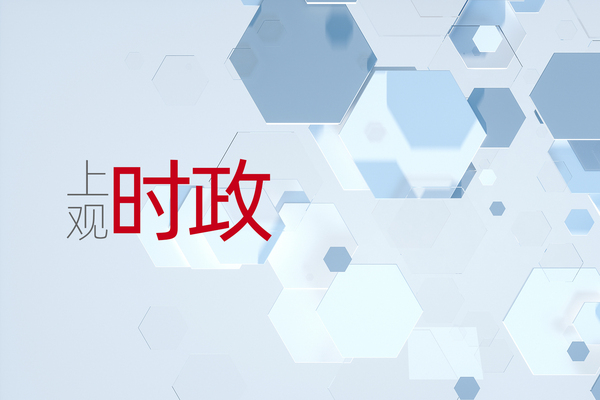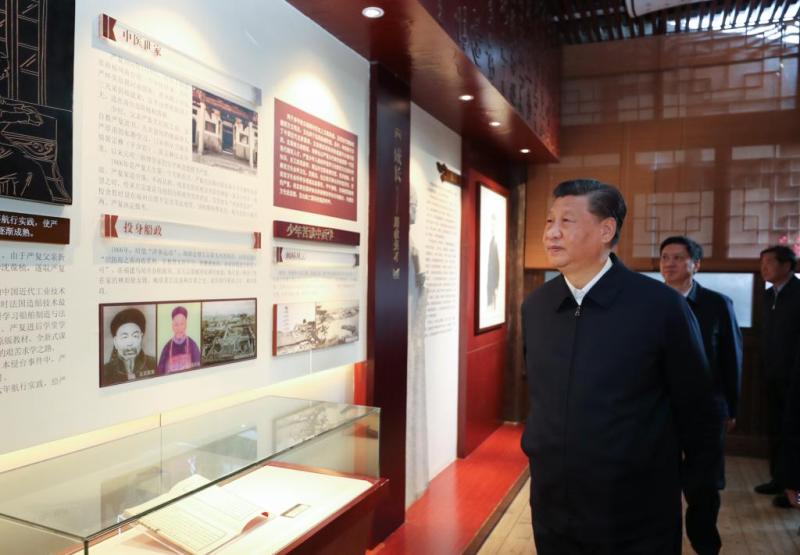General Secretary's inspection in Qinghai focuses on promoting ethnic unity and progress
On the afternoon of June 18, General Secretary Xi Jinping inspected and investigated in Qinghai Province. He first visited the Guoluo Xining National Middle School and Hongjue Temple in Xining City to learn about the local efforts to deepen the east-west cooperation and targeted support in education, strengthen the education of building a strong sense of community for the Chinese nation, and promote the fine tradition of patriotism and love for religion in the Tibetan Buddhist community and promote national unity and progress.
Standing at the coordinates of history can help us deeply understand the great significance of the General Secretary's focus on promoting national unity and progress at this moment.
Ten years ago, in May 2014, at the second central symposium on Xinjiang work, General Secretary Xi Jinping clearly put forward the concept of "sense of community of the Chinese nation."
Since then, General Secretary Xi Jinping has expounded on this important proposition of forging a strong sense of community for the Chinese nation on different occasions, and promoted it as the main line of the Party’s ethnic work and all work in ethnic regions in the new era.
He convened a series of important meetings and issued important instructions on ethnic work; he conducted in-depth investigations in ethnic areas many times and visited villages, communities, schools, and temples... Since the 18th National Congress of the Communist Party of China, the General Secretary has always been concerned about the stable development, unity and progress of ethnic areas. He has constantly emphasized the need to build a strong sense of community for the Chinese nation, hoping that people of all ethnic groups will hold together like pomegranate seeds, and work together for the same goal.
Over the past decade, efforts to forge a strong sense of community for the Chinese nation have been steadily advanced, ethnic minority areas have been lifted out of poverty and are moving towards a well-off society, their appearance has changed with each passing day, and the cause of national unity and progress has opened a new chapter, demonstrating the truth and practical power of this important assertion.
On the 18th, General Secretary Xi Jinping came to Qinghai, a province populated by many ethnic groups, for inspection and research. He visited an ethnic middle school built with assistance from Shanghai and a thousand-year-old temple that promoted unity between the Han and Tibetan ethnic groups. This demonstrated the General Secretary's concern for the education cause in ethnic minority areas and his emphasis on uniting the broad masses of religious believers and continuously building a common spiritual home for the Chinese nation. It was also a re-emphasis and re-deployment of the need to forge a strong sense of community for the Chinese nation.
This trip to Qinghai took place just before the Third Plenary Session of the 20th Central Committee of the Communist Party of China.
The Third Plenary Session of the 20th CPC Central Committee will focus on studying how to further comprehensively deepen reform and promote Chinese-style modernization.
Chinese-style modernization is modernization for common prosperity of all people, and no ethnic group can be left out.
From a national perspective, ethnic minority areas differ in resource endowments, development conditions, comparative advantages, etc. Ethnic minority areas must firmly grasp development, the master key to solving all problems, transform resource advantages into advantages in exploring high-quality development, and seek the "optimal solution" in development.
Since the 20th National Congress of the Communist Party of China, General Secretary Xi Jinping has visited ethnic minority areas such as Inner Mongolia, Xinjiang and Guangxi, and prescribed prescriptions for high-quality development in various places based on local conditions.
How to promote all ethnic groups to move towards socialist modernization together? "Support ethnic regions to comprehensively deepen reform and opening up and enhance their self-development capabilities", "integrate into the new development pattern and achieve high-quality development", "increase support for infrastructure construction and industrial structure adjustment in ethnic regions", "improve the policy system for development and opening up along the border"... The General Secretary has repeatedly made clear requirements.
In the face of new problems and challenges, we must continue to make good use of reform, this key move, and use reform methods to solve problems in development.
At the same time, reform has entered deep waters, and only by finding the "greatest common divisor" can we gather reform forces on a larger scale and draw the largest "concentric circle."
In the General Secretary’s mind, “the Chinese nation is a big family, and every family member should live a good life.” To realize the great rejuvenation of the Chinese nation, all ethnic groups need to work together hand in hand and shoulder to shoulder.
The greater the goal, the more arduous the task, and the more complex the situation, the more we need to consolidate and strengthen the unity of all parties, and use unity and solidarity to build an iron wall to overcome risks and challenges.
General Secretary Xi Jinping went to ethnic minority areas and stressed the need to forge a strong sense of community for the Chinese nation, to pool wisdom and strength to further comprehensively deepen reform and advance Chinese-style modernization, and to ensure that the whole Party and people of all ethnic groups across the country think and work in unity and move forward in unison.






